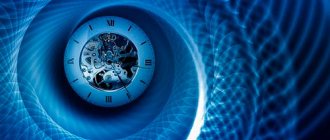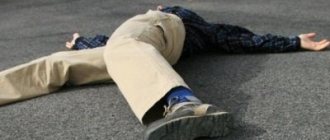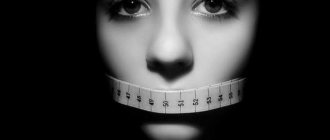Mental disorders have a variety of clinical manifestations. Some diseases are temporary and respond well to treatment once the cause of their occurrence is eliminated. However, in most cases, these malfunctions of higher nervous activity are among chronic lesions that require constant monitoring. Paranoid schizophrenia is a severe mental disorder that develops under the influence of many unfavorable factors. The exact nature of the pathology is unknown, but its clinical manifestations are well described.
Causes of paranoid schizophrenia
The main cause of the paranoid type, like all other types of schizophrenia, is considered to be a physiological disorder in the dopamine metabolism system in certain areas of the brain, as well as a genetic predisposition to this disease.
Schizophrenia of the paranoid type can be chronic or episodic in nature with the persistence of primary vivid symptoms (delusions, hallucinations). At the initial stage of the disease, the patient is also withdrawn, experiences attacks of anxiety, suspicion, and various obsessive states. At the clinical stage of development of schizophrenia, the patient exhibits pseudohallucinations, delusions of persecution, and sensations of physical influence, requiring qualified treatment. Alcohol, drugs and other psychotropic drugs are contraindicated for patients with paranoid schizophrenia.
Paranoid schizophrenia being treated in a clinic
At the Moscow center of psychiatry and psychotherapy “Preobrazhenie Clinic” you will receive everything you need for complete treatment of paranoid schizophrenia. The clinic’s specialists provide comprehensive treatment using the most effective methods. Both patients and loved ones receive assistance. You can find out the cost of services here.
Why should paranoid schizophrenia be treated?
The specialists of our clinic are attentive to each patient and are ready to help you in the fight against mental illness. Here you will receive all the necessary medical and psychological assistance, the patient will be prescribed medication and supportive psychotherapy. “Transfiguration Clinic” works so that you and your loved ones can return to a full life and forget about mental illness.
With us you will receive:
- rapid treatment with accurate diagnosis;
- attentiveness and understanding;
- psychological support for the patient’s loved ones;
- a full range of services for the rehabilitation of a patient with schizophrenia;
- anonymity of treatment and compliance with confidentiality conditions.
Specialists at the Transfiguration Clinic of psychiatry and psychotherapy in Moscow are ready to help your loved one and you at any time.
Symptoms
There is no diagnosis of “paranoid schizophrenia” - doctors usually talk about paranoid schizophrenia . In this form, in addition to the symptoms common to schizophrenia, there are also very specific ones. A psychiatrist must understand the nuances of diagnosis and treatment.
The main symptoms of this condition:
- delusional ideas of influence, special purpose, jealousy, damage and the evil eye, persecution, relationships and others;
- the most common hallucinations are auditory, threatening, inciting or imperative (commanding) in nature;
- less often hallucinations of other sense organs, the rarest are visual;
- disturbances of emotions and will (coldness, lack of will) can be hidden by a disorder of thinking in the acute period;
- The onset of the disease is usually 20–25 years.
Symptoms of paranoia
Symptoms of paranoia in people are:
- Aggression;
- Negative attitude towards friends, relatives, loved ones;
- Hallucinations, most often auditory, but sometimes visual;
- Reluctance to communicate with people;
- Increased mental and physical activity;
- Movement disturbances, changes in gait, facial expressions, and gestures.
Risk factors for developing the disease
The reasons for the development of all types of schizophrenia are generally the same - genetic predisposition, gene mutation, intrauterine developmental anomalies and fetal hypoxia. It should be noted that the disease can manifest itself even if there are no cases of schizophrenia in the family. The pathology is associated with disturbances in brain function, resulting in an imbalance of mood neurotransmitters. In particular, excess dopamine plays an important role in the development of schizoid disorders.
Risk factors include:
- drug addiction;
- alcoholism;
- frequent stress;
- psychotraumatic situations;
- personality traits.
Thus, paranoid forms of the disorder are faced mainly by people who initially show irritability, impatience and suspicion as character traits.
Since the pathology is considered to be a consequence of a violation of the production of neurotransmitters, the main trigger for the onset of the pathological process is considered to be the use of drugs or alcohol addiction. Among the psychological factors are psychotraumatic situations that happened to the patient in the past, which he was never able to accept and let go, and therefore they become the main ideas of delirium.
Causes of schizophrenia and paranoia
The following factors may contribute to the appearance of these pathologies:
- Heredity. Schizophrenia, according to research, can be transmitted genetically.
- Stress, if a person has a predisposition to the disease, then stress can become the “start” button for the development of the disease.
- The use of drugs or alcohol, with serious addiction, the human psyche is exposed to the harmful effects of psychotropic substances, and this can cause a number of mental diseases.
- Problems with the child that arose in the womb. The causes of the development of the disease can be serious experiences of the mother during pregnancy, her diet and previous infections.
- The reasons are at the neurobiological level. Disorders in the production of dopamine and serotonin in the body can cause mental disorders.
Paranoid schizophrenia and delusions
Delusional disorders may be accompanied by hallucinations. This is a distortion of perception when a person perceives something that is not in the real world. The most common are auditory hallucinations: voices that only the person himself hears. They criticize the patient, argue with each other, and are threatening, forcing the person to do what he does not want. If visual hallucinations occur, the patient becomes even more disconnected from reality.
Other mental disorders in paranoid schizophrenia include:
- senestopathy - painful bodily sensations that have no physical basis;
- depersonalization – a disorder of self-perception, with alienation of one’s personality;
- social isolation and withdrawal into one’s inner world;
- emotional inadequacy, anxiety, sleep disturbances and other general mental disorders.
In paranoid schizophrenia, thinking remains intact for a long time. Negative symptoms also develop to a small extent: the will rarely suffers and emotional devastation is practically not expressed. Therefore, this group of patients maintains working capacity and commitment to socially approved actions for a long time: creating a family, having children, and others.
Forecast
The prognosis for paranoid schizophrenia depends on the form and course of the pathological process. Recurrent forms are the softest. Next you need to monitor the patient. According to general observations, women have better prognoses than men. Rapid development of the clinical picture is associated with a better outcome. The presence of chronic Kandinsky-Clerambault syndrome indicates a poor course of the disease. The defect will come early.
A history of alcoholism, drug addiction, and lack of social contacts has a negative impact.
Is it possible for paranoid schizophrenia to transform into another form?
Yes, fur-like, recurrent forms are often transformed into continuously flowing varieties.
Patients in acute condition can pose a threat to others and themselves. Urgent hospitalization is indicated. Disability in paranoid schizophrenia is established when several episodes of the disease are detected.
Features in women
Positive and negative symptoms in women are often associated with complexes about appearance, family and children. Ideas are reflected in the content of hallucinations and delusions. Women often overprotect their children and claim that someone wants to harm them. Sometimes these are vague individuals, but in most cases patients point to relatives, neighbors, ex-spouses, etc. However, some men may also experience similar symptoms.
Features in men
Men are more likely to have ideas of persecution, surveillance and espionage. Sometimes delusions and hallucinations are related to colleagues and work. If a paranoid schizophrenic has a partner, he will suspect his spouse of infidelity. In later stages, a man may try to protect himself from imaginary enemies. This is expressed in the creation of barricades, installation of additional locks, installation of video surveillance, etc.
Signs of delusion and hallucinations
The following behavioral factors may indicate the presence of auditory or visual hallucinations:
- a person talks to himself in the form of a conversation or remarks;
- at the moment when the patient becomes silent, those around him get the impression that he is listening to something. At the same time, the impression arises that he sees and hears what others do not see;
- causeless, hysterical laughter or, conversely, anxiety and concern may occur;
- During a conversation, it is difficult for the patient to concentrate on one topic.
The following signs indicate the presence of delirium:
- the individual’s attitude towards others changes sharply, unjustified hostility or isolation, alienation appears;
- statements become dubious, implausible, meaningful, and incomprehensible to others;
- a person begins to fear for his life or for the lives of loved ones; fear and anxiety are clearly manifested, which can be expressed in constantly locking doors, curtaining windows, checking food for the presence of poisons, etc.
It is necessary to react to the above behavior of the patient with the utmost restraint and delicacy. It is strictly forbidden to mock, argue with him, discuss his hallucinations, or detail them. The main thing in such a situation is to help the person feel protected, to inspire trust, and to carefully persuade them to see a doctor for advice. Relatives need to be especially vigilant towards a patient whose suicidal tendencies have worsened during the course of the disease.
Varieties of flow
There are two types of paranoid schizophrenia, differing in symptoms:
- First type: delusional . Nonsense of any nature, based on any idea, is considered here. The main thing is that the patient’s ideas about reality are false. The patient often becomes aggressive, but, in general, his emotional reactions are adequate. There are difficulties with clearly formulating and expressing your thoughts.
- Second type: hallucinatory . The patient hears voices or smells smells that do not exist in reality. Hallucinations of any kind cause a lot of problems in everyday life; a person acquires previously unusual anxiety and suspiciousness. If the disease is not treated, the prognosis for the patient is extremely unfavorable.
Variants of the course of paranoid schizophrenia: continuous type of course, episodic with an increasing defect, episodic with a stable defect, episodic remitting, incomplete remission, complete remission.
What is paranoid schizophrenia?
Paranoid schizophrenia is a fairly serious mental disorder that is usually accompanied by suspicion of others. A person begins to hear different voices, his thinking and perception of the surrounding reality completely changes.
In the people around them, those suffering from this disorder see their personal enemies and the enemies of their loved ones.
And in delusional judgments, relatives are sometimes perceived by them as people who want to cause harm. At the same time, patients with paranoid schizophrenia are more responsible and disciplined, which is how the disease manifests itself.
For example, they always pay for travel on public transport and follow traffic rules. They have practically no problems with memory, and outwardly they rarely show increased emotionality. Sometimes it is very difficult for a non-specialist to identify a paranoid schizophrenic in a person.
But based on some signs, it is still possible to conclude that the disease is present. First of all, paranoid schizophrenia manifests itself when describing the patient’s interaction with the outside world. Most often it will be about the ongoing struggle for life in a completely hostile and aggressive environment.
The patient’s entire life is accompanied by daily nightmares, and is interspersed with constantly heard voices and a variety of, sometimes very vivid, visions that haunt the person not in sleep, but in reality.
Post-therapy period
After undergoing treatment for paranoid schizophrenia under medical supervision, the person returns home. The methods that are used today to treat paranoid schizophrenia make it possible to restore the level of social involvement as much as possible. The patient will be able to lead a full life if he carefully monitors his own health and regimen. If treatment for paranoid schizophrenia has gone well, such people are similar in the degree of restrictions and responsibilities imposed to patients with diabetes.
But, unfortunately, it is not always possible to restore lost mental balance, and if paranoid schizophrenia has gone too far, then the patient can no longer fully interact with society. The first thing such patients lose is the ability to work, which is associated with the slightest risk to their life. To protect them from danger, such paranoid schizophrenics are given a disability. And sometimes paranoid schizophrenia has progressed so much that the person is declared legally incompetent. Such cases are quite rare, and most often the relatives of patients agree to constant medical supervision.
Treatment of paranoid schizophrenia
The treatment of this disease has undergone many phases before reaching the state we know. In the modern era of many different antipsychotics, it has become possible to choose the most optimal and effective relief option to help the patient achieve the desired therapeutic effect.
Initially, treatment was aimed at stopping production, that is, relieving hallucinations and correcting delusions, but over time it became obvious that negative deficiency symptoms harm the patient to a great extent. That is why modern complex treatment of paranoid schizophrenia is aimed not specifically at productive psychopathosymptoms, but also at deficit symptoms.
Previously, the preferred treatment was given to typical neuroleptics, including Triftazin, Truxal, Tizercin, Haloperidol, Aminazine. But during the era of atypical antipsychotics, these drugs lost their position, due to a loss in the number of negative side effects and a rather limited intensity. But they cannot be completely excluded, given their good therapeutic effect. The need to choose a drug depending on the cost can also affect the choice of drugs in this series, since the price is much lower.
Therapy of paranoid schizophrenia is based on the different effects of antipsychotics, including general antipsychotic, sedative, selective antipsychotic effects that affect individual psychopathosymptoms. Atypical antipsychotics have a disinhibitory effect; in general, the effect depends on blocking D2 dopamine receptors.
Relief from the disease also depends on the stage at which it is detected. When detected in the pre-manifest period, that is, before the appearance of obvious acute symptoms of paranoidity and schizophrenia, adequate antipsychotic treatment is used. Its effectiveness can be as high as possible due to the fact that the patient does not yet have deficiency symptoms, and the process of destruction of gray matter has not begun or is at a minimal initial stage. It is optimal to use therapeutic dosages of atypical neuroleptics: Palipirodone, Risperidone, Soleron, Solian, Rispolept.
At the first psychotic episode, that is, the obvious manifestation of the disease, treatment is only inpatient. Usually at this stage the patient is already aggressive and dangerous to the environment, so it makes sense to use antipsychotic drugs with a sedative effect. But regardless of the stage and symptoms, it is important that the treatment of such a serious psychotic illness as paranoid schizophrenia is determined by a psychiatrist, since early and accurate prescription of antipsychotics can greatly improve the quality of life of a schizophrenic.
Often, at the inpatient stage, treatment is carried out intravenously and then it is possible to use agents that potentiate the effect of neuroleptics. These include Diphenhydramine and various tranquilizers. After active treatment, one or more antipsychotics are necessarily selected, during which the patient has a relatively stable condition, so they are prescribed for a long time. Separately, I would like to note that this pathology requires lifelong use of antipsychotic drugs.
Diagnostics
Only a psychiatrist can make a diagnosis of paranoid schizophrenia. The specialist must collect the entire medical history and study the patient’s condition. And only after that a verdict is made. Instrumental and laboratory tests are of secondary importance when making a diagnosis. It is necessary to exclude vascular and alcoholic dementia, encephalopathy, and identify possible somatic diseases that can affect the state of the brain.
Diagnosis of the disease
Only an experienced psychiatrist can make an accurate diagnosis. The sooner this happens, the greater the patient's chances of recovery. Our specialists use the most modern diagnostic methods - clinical, anamnestic and neurophysiological test systems. Based on the results of the study, doctors will be able to establish an accurate diagnosis and choose the right course of treatment.
Treatment
Therapy of the disease is carried out by taking special medications that have a beneficial effect on brain function and relieve acute symptoms of schizophrenia (antipsychotics, sedatives, sleeping pills, antidepressants).
The basis for the treatment of the disease are neuroleptics (Haloperidol, Solian, Rispolept and analogues); these drugs, when taken in a course, can slow down personality deformation in patients.
Thus, treatment of paranoid schizophrenia is carried out in two stages, with the goal of stabilizing the patient’s condition and then maintaining it at the proper level.
Due to the fact that therapy is carried out on an ongoing basis, psychiatrists practice changing tablet forms of antipsychotics to injectable ones and vice versa.
Psychotherapy
Psychotherapeutic techniques play a significant role in the cure for paranoid schizophrenia. The specialist must conduct periodic personal sessions with the patient, the purpose of which is not only to monitor his condition, but also to enhance the effectiveness of the therapy.
It is very important that loved ones take part in the patient’s treatment. The main danger of schizophrenia is the patient’s lack of a sober assessment of the situation. A person is not able to realize his condition, therefore he needs sensitive supervision.
Outcome of the disease
With proper treatment, signs of the disease such as pseudohallucinations or systematic delusions become less pronounced. They are replaced by the symptom of a monologue: the patient answers simple questions with endlessly long phrases. His speech is devoid of any content or meaning, although it remains grammatically correct. A characteristic schizophrenic defect also occurs - irreversible changes in a person’s personality and psyche.
In the absence of adequate therapy, people who have suffered from paranoid schizophrenia for a long time become unemotional and phlegmatic. The scope of their interests is significantly narrowed, the incentives to action are absent or weakly expressed. Over time, the symptoms of the disease worsen, and contact with the real world is completely lost. Often such people are visited by thoughts of suicide and persistent suicidal activity, directed both at the patient himself and at the people around him.
Related posts:
- Benefits of Stress Stress is a normal defense mechanism that the human body needs...
- Organic depressive-anxiety disorder Anxiety disorders are a group of neurotic disorders with diverse symptoms….
- Constant fear and anxiety Anxiety is the activity of the subconscious, trying to protect the body from possible...
- Prosopagnosia Prosopagnosia (from ancient Greek πρόσωπον, prósōpon - face and ἀγνωσία, agnōsía...
Reasons and factors
Although the symptoms of paranoid schizophrenia are reliably known, researchers are still arguing about its causes.
True, many agree on the huge role that brain dysfunction plays in this pathology. But what factor contributes to this has not yet been revealed.
Genetics, as well as environmental triggers, are considered to be a definite risk factor. However, no theory has strong enough evidence to be proven.
Genetic predisposition most often serves as a kind of “switch” that is activated by some event, emotional experience or some other factor.
Here are some factors that increase the likelihood of a diagnosis of paranoid schizophrenia:
- the presence of psychotic disorders in one of the relatives;
- viral exposure in the womb;
- lack of nutrients for the fetus;
- experiencing stress in childhood;
- result of violence;
- late conception of a child;
- use of psychotropic substances (especially by adolescents).
Worth seeing: Catatonic schizophrenia
And here are the symptoms of the paranoid form of schizophrenic disorder:
- persecution mania;
- feeling of fulfilling a special mission;
- manifestation of aggressive behavior;
- suicidal tendencies;
- the appearance of hallucinatory voices in the head (including imperative ones);
- possibility of tactile or visual hallucinations.
Paranoid people tend to be suicidal
The criteria for diagnosing the disease must correspond to this schizophrenic subtype.
Only the presence of obvious hallucinations and severe delusions allows a doctor to diagnose the described disorder, despite the fact that:
- catatonic symptoms practically do not appear;
- emotions and speech are almost unimpaired.
Among delusional states, the most characteristic are all kinds of persecutory beliefs.
But the development of drug-induced and epileptic psychoses is, as a rule, excluded.
It is interesting that there is a certain relationship between the nature of delusion, as one of the symptoms of paranoid schizophrenia, and the level of a person’s culture, and even its origin.









